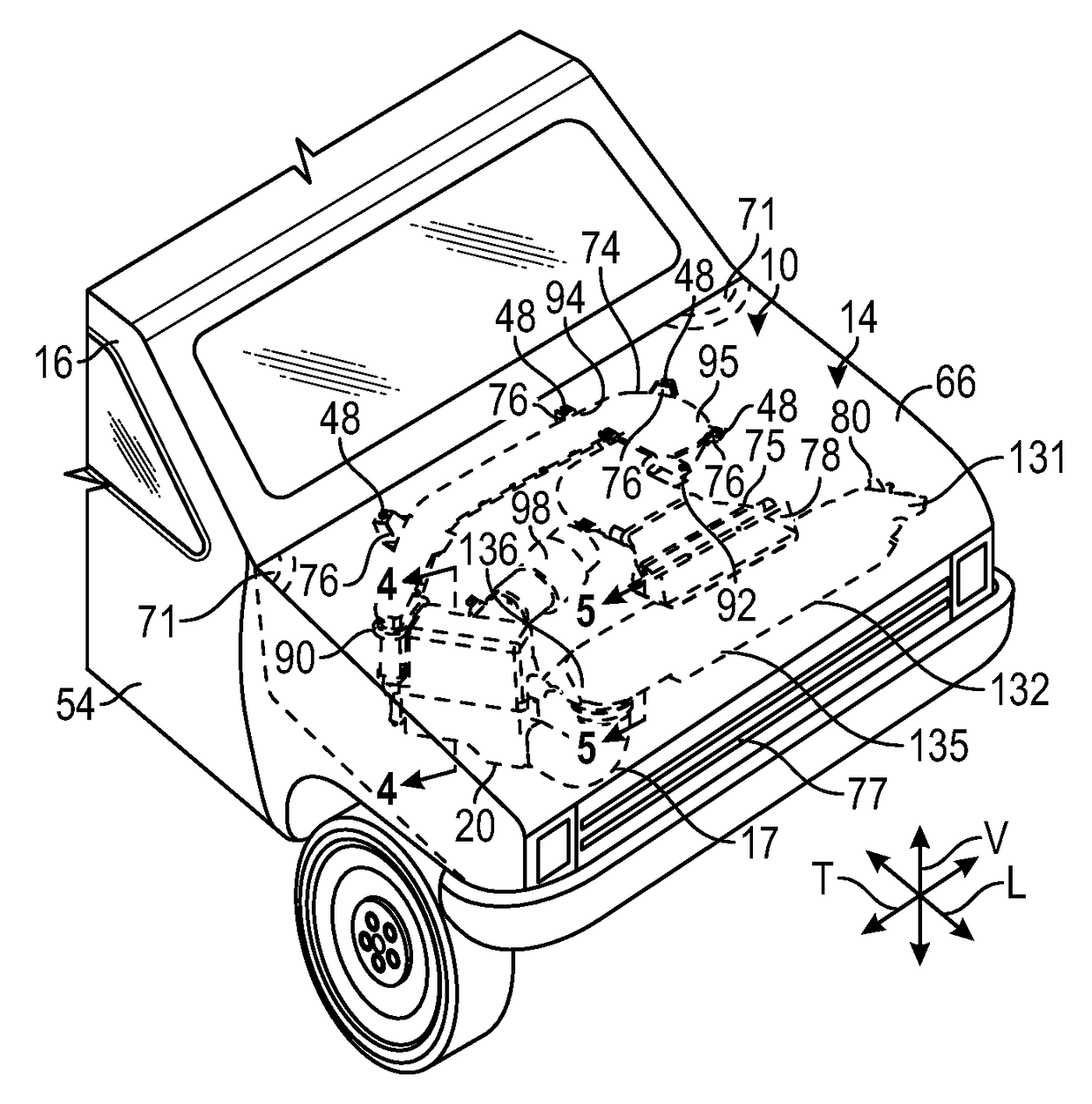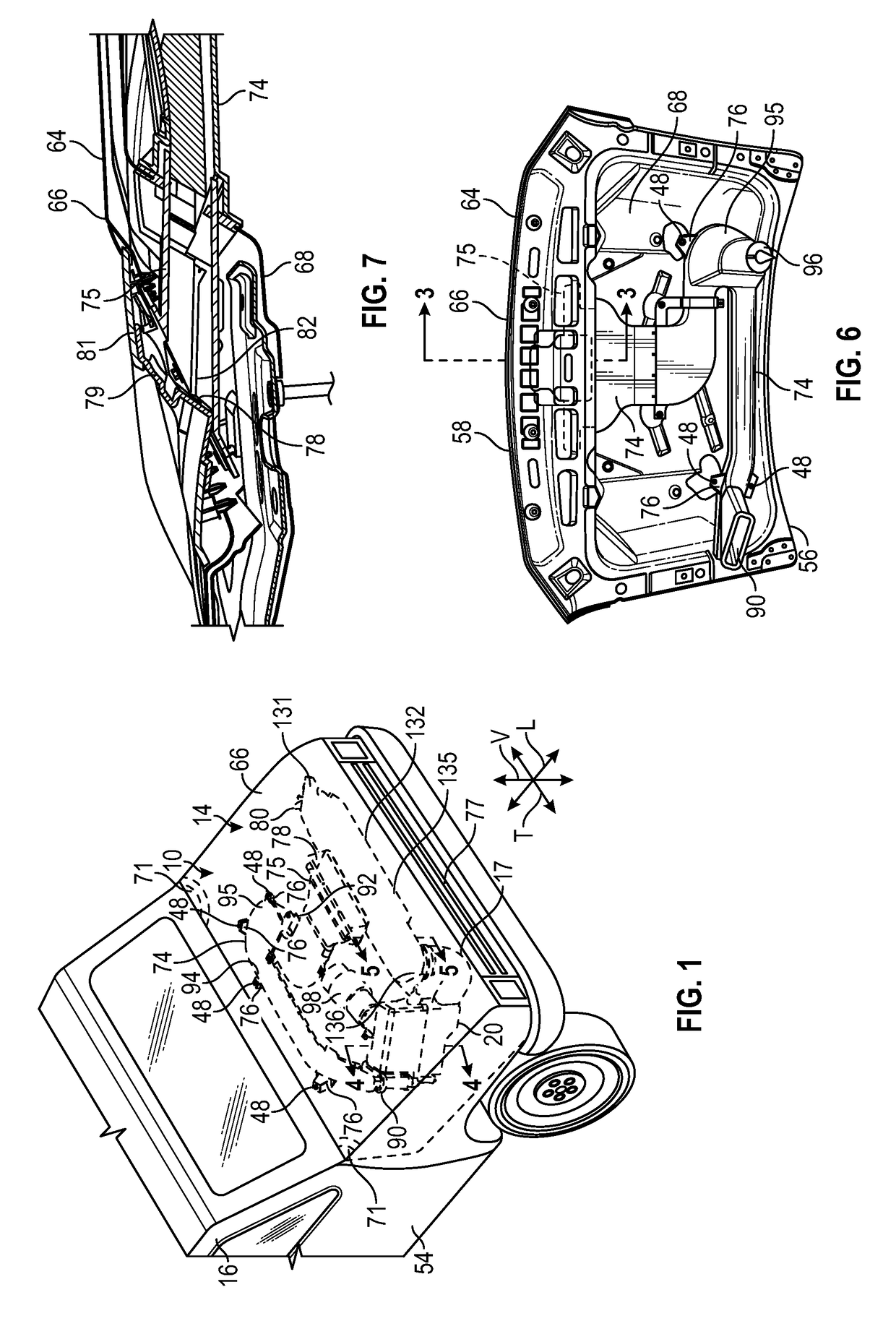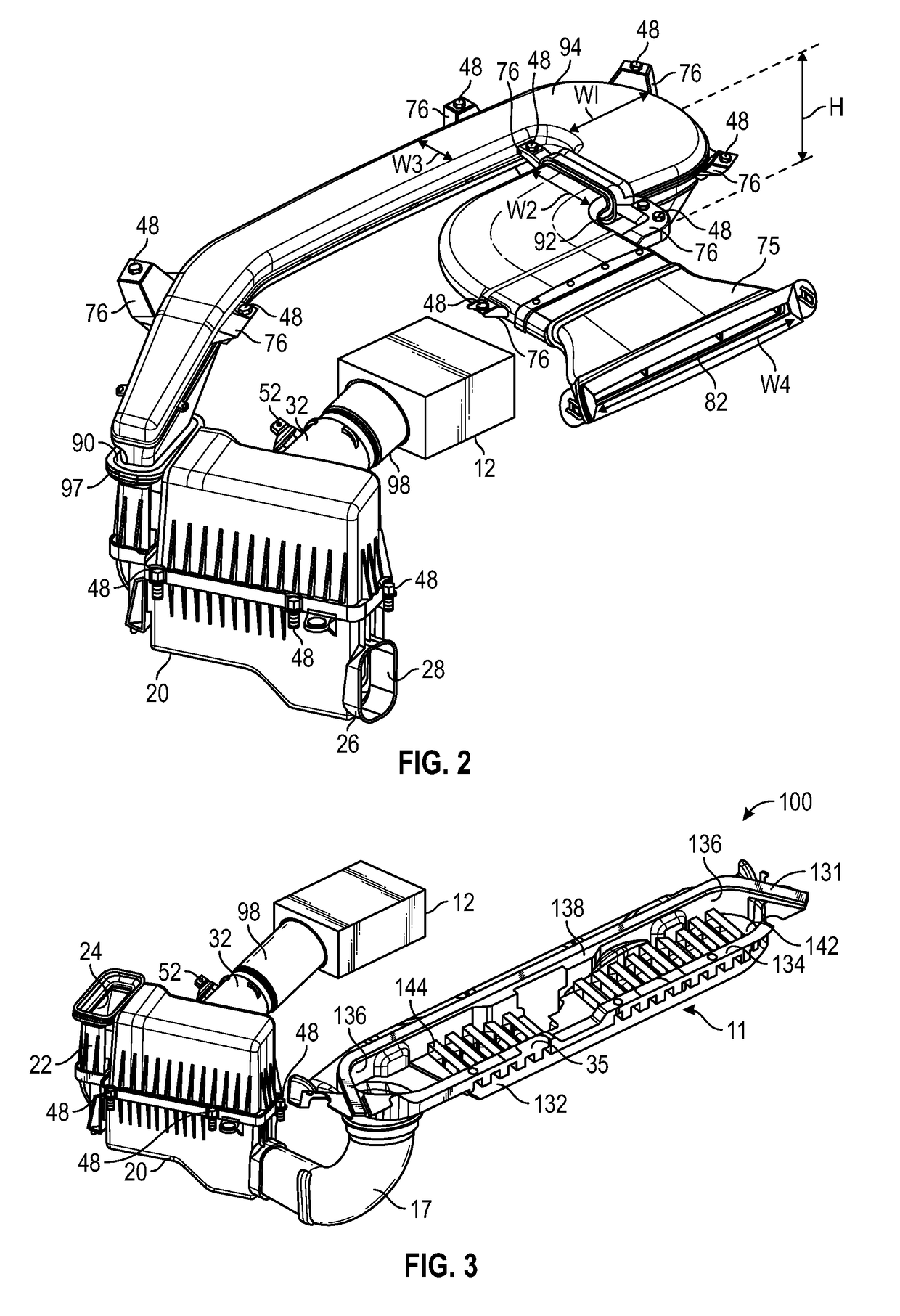Passively managed hood and plenum fed air induction system with parallel contaminant management features
a plenum and contaminant management technology, applied in the field of air induction system, can solve the problems of keeping elevated engine compartment air out of the induction, and achieve the effects of reducing peak inlet velocity, reducing inlet air temperature, and increasing engine power
- Summary
- Abstract
- Description
- Claims
- Application Information
AI Technical Summary
Benefits of technology
Problems solved by technology
Method used
Image
Examples
Embodiment Construction
[0020]While the present disclosures may be described with respect to specific applications or industries, those skilled in the art will recognize the broader applicability of the disclosures. Those having ordinary skill in the art will recognize that terms such as “above,”“below,”“upward,”“downward,” et cetera, are used descriptively of the figures, and do not represent limitations on the scope of the disclosures. Any numerical designations, such as “first” or “second” are illustrative only and are not intended to limit the scope of the disclosures in any way. As used herein, the term substantially denotes variance from exact or perfect values. Skilled artisans recognize that relationships, ratios, or orientations are rarely exact. Therefore, for example, substantially equal may refer to variances of five-percent from exact (one-hundred percent) equality.
[0021]Referring to the drawings, wherein like reference numbers refer to like components throughout the views, FIG. 1 show a porti...
PUM
 Login to View More
Login to View More Abstract
Description
Claims
Application Information
 Login to View More
Login to View More - R&D
- Intellectual Property
- Life Sciences
- Materials
- Tech Scout
- Unparalleled Data Quality
- Higher Quality Content
- 60% Fewer Hallucinations
Browse by: Latest US Patents, China's latest patents, Technical Efficacy Thesaurus, Application Domain, Technology Topic, Popular Technical Reports.
© 2025 PatSnap. All rights reserved.Legal|Privacy policy|Modern Slavery Act Transparency Statement|Sitemap|About US| Contact US: help@patsnap.com



